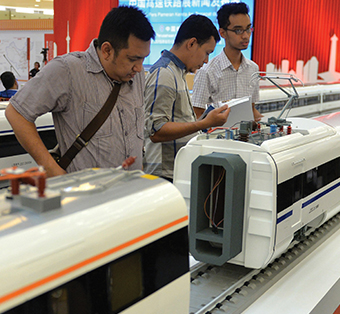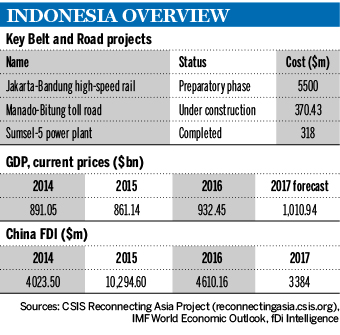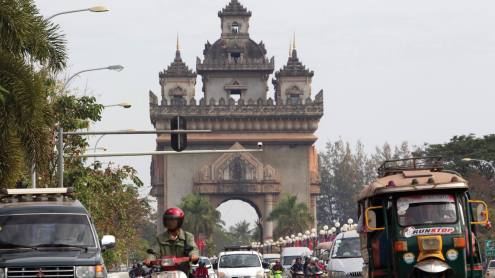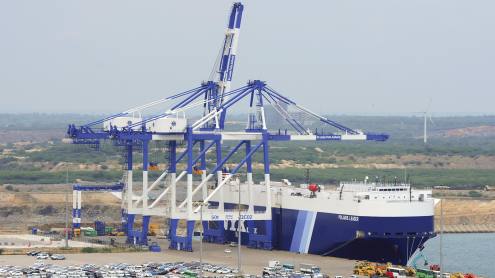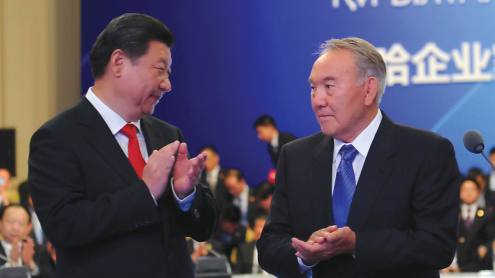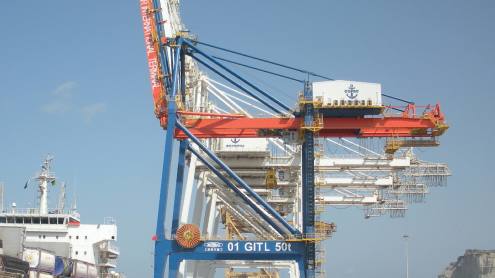The land that will host one of the four stations of Indonesia’s first high-speed railway lies in the middle of a tea plantation outside Bandung, the country’s third largest city. Yet for such a high-profile project, there does not appear to be much work going on at the site.
The railway is one of the few ongoing projects under China’s Belt and Road Initiative (BRI) in Indonesia. Launched in January 2016, the planned 142-kilometre railway connecting Jakarta and Bandung was supposed to demonstrate China’s expanding economic prowess and influence.
However, local officials say that as of late February 2018, only one-tenth of work was completed, rendering it impossible for operations to start as scheduled in 2019. A funding crunch is also raising concerns over the financial health of Indonesian companies involved in the project.
“After the project launch, there had been almost no activity besides the cleared land,” says a local villager. “No rail tracks. Nothing. Work only restarted about three months ago, for the underground tunnel.”
Slow start
Problems with paperwork and permits halted the project in the first few months after launch, after which land acquisition proved to be a major headache. Only half of the total land needed for the railway has been acquired. What is more, increasing land prices are contributing to the project’s rising price tag, from $5.5bn when it was launched to $6bn.
Sluggish land acquisition has had other serious consequences. China Development Bank (CDB), which agreed to cover 75% of the project cost with loans, has repeatedly delayed disbursement, hampering progress further.
“The CDB will [start] loan disbursement [in March],” says Indonesian chief maritime minister Luhut Panjaitan, whose office oversees joint Belt and Road projects with China. But since CDB signed the loan agreement in May 2017, deadlines for distributing the money have been pushed back repeatedly. There is no telling if the funds will be disbursed this time.
Analysts argue it is unlikely China will cancel its funding entirely, given Indonesia’s strategic position as south-east Asia’s largest economy. But some believe China has more pressing priorities. In a note, brokerage Reliance Sekuritas Indonesia says: “High-speed rail in Java island is an investment that could wait as China has more immediate incentives to strengthen its trade routes in its neighbouring countries first that are not separated by seas.”
No local banks
Despite the funding crunch, it is out of the question that local banks or other parties will be allowed to participate in the rail project. Its financing is a locked scheme agreed by the governments of China and Indonesia, with a consortium of state-owned enterprises (SOEs) from both countries covering the remaining 25% of the cost with equity funding. Inviting another party would alter the SOEs’ share composition – an unlikely move.
Furthermore, despite improvements in recent years, Indonesian banks – due to their small size – have little appetite for large-scale infrastructure projects that require long-term investments. The domestic banking industry’s high interest rates would also raise borrowing costs. “If [a project] is only economically feasible but not financially viable, we won’t enter,” says David Sumual, chief economist at Indonesia’s largest private lender, Bank Central Asia.
Nevertheless, local banks are believed to be indirectly involved in the project by issuing working capital loans to local contractors and subcontractors. Builder Wijaya Karya, a leading Indonesian member of the consortium, reported its short-term loans nearly quadrupled to Rp4700bn ($341m) in 2016 from a year earlier, after the project’s launch.
Meeting infrastructure needs
Despite the troubled railway construction, Indonesia continues to have high hopes that BRI will help cover the funding gap in president Joko Widodo’s $355bn infrastructure drive. BRI is seen as compatible with his vision to develop the country’s maritime sector.
The second active BRI project in Indonesia is the Morowali Industrial Park on Sulawesi island. The island already hosts Chinese nickel smelters and a stainless steel factory. A $1.6bn deal, which includes the construction of a carbon steel factory and a big power plant, was signed during the 2017 BRI forum in Beijing.
Additionally, Indonesia’s Investment Coordinating Board has designated three provinces – North Sulawesi, North Kalimantan and North Sumatra – for BRI investment. Future plans include the development of new industrial parks, ports, airports and the tourism sector.



